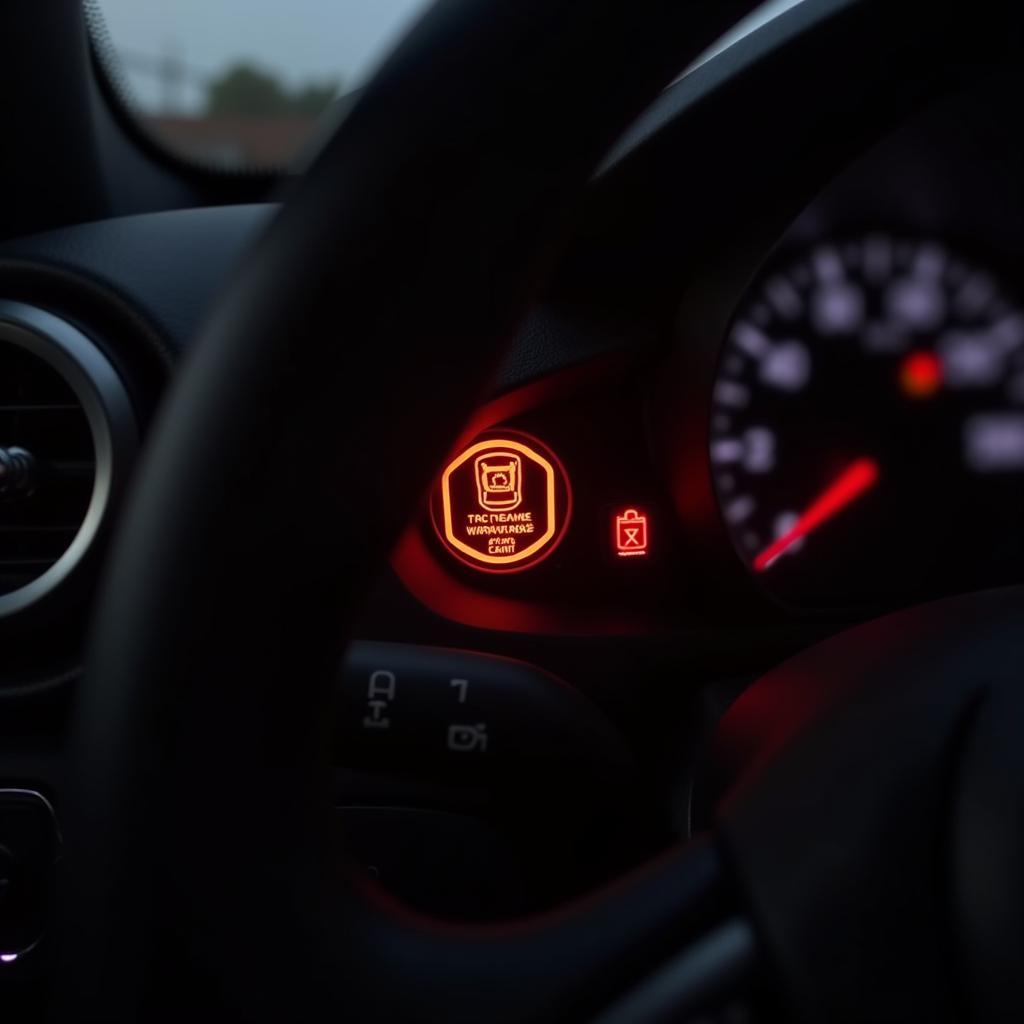Seeing both your check engine light and battery light illuminated on your dashboard can be alarming. Within the first few moments of noticing this double warning, you might be wondering what’s wrong and what to do next. This article will provide a comprehensive guide to understanding why these lights might be on simultaneously, what potential problems they indicate, and how to address the situation effectively.  Check engine and battery light illuminated on a car's dashboard
Check engine and battery light illuminated on a car's dashboard
Understanding the Warning Lights
The check engine light is a general indicator of a potential issue within your car’s engine or emissions system. It can signify anything from a loose gas cap to a more serious problem like a faulty catalytic converter. The battery light, on the other hand, specifically relates to the charging system. When illuminated, it suggests that the battery isn’t being charged properly by the alternator.
Why Are Both Lights On?
The simultaneous illumination of these lights can be perplexing. Sometimes, the underlying issue causing one light might also trigger the other. For instance, a failing alternator will prevent the battery from charging, causing the battery light to come on. This can also lead to the car’s computer malfunctioning, triggering the check engine light. Other possibilities include a bad battery causing excessive strain on the alternator or a faulty serpentine belt affecting both the alternator and other engine components. Are you concerned about your car battery being drained overnight? Read this article about car battery being drained overnight for more information.
Another potential culprit is a faulty voltage regulator. This component controls the voltage output of the alternator. A malfunctioning regulator can overcharge or undercharge the battery, leading to both warning lights illuminating. If you’re experiencing these issues with a Chrysler 200, it’s helpful to look at specific information about Chrysler 200 battery issues.
What to Do When Both Lights Come On
First, don’t panic. Pull over to a safe location as soon as possible and turn off your engine. Continuing to drive with a potential charging system issue can lead to a complete breakdown.
- Check Your Battery Connections: Make sure the battery terminals are clean, tight, and free of corrosion. Sometimes, a loose connection can cause charging problems.
- Visually Inspect the Serpentine Belt: Check for any cracks, fraying, or slippage. A damaged belt can affect the alternator’s performance.
- Get a Diagnostic Scan: The best way to pinpoint the problem is to have the car’s computer scanned for diagnostic trouble codes (DTCs). This can be done at most auto repair shops or even with a personal OBD-II scanner. This scan will provide specific codes related to the issue, enabling a more accurate diagnosis.
“When dealing with multiple warning lights, a diagnostic scan is crucial,” says automotive expert, John Miller. “It saves time and money by identifying the root cause, preventing unnecessary repairs.”
Remote Diagnostics and Programming
Modern technology allows for remote diagnostics and programming. This means a qualified technician can often diagnose and even fix some issues remotely. This is particularly helpful for software-related problems that can sometimes trigger the check engine light. Looking to upgrade your car’s audio system? Consider a 9 inch car stereo radio bluetooth double din touch screen.
“Remote diagnostics offer a significant advantage in terms of convenience and speed,” says Sarah Lee, a specialist in remote automotive diagnostics. “It allows for quicker problem identification and often eliminates the need for a physical visit to a repair shop, particularly for software-related issues.”
Conclusion
When your check engine light and battery light come on together, it’s a clear sign that something needs attention. While the problem might be as simple as a loose connection, it could also indicate a more serious issue with the charging system or other engine components. Prompt diagnosis and appropriate action are crucial to prevent further damage and ensure your car’s reliability. Don’t delay in addressing this issue and seek professional assistance if needed. Remember to check out finding a battery drain on a car for more detailed information on troubleshooting electrical issues. If all your warning lights came on and then the car died, this article about all my warning lights came on then car died may provide helpful insights.
FAQ
- Can a bad battery cause the check engine light to come on? Yes, a failing battery can cause voltage fluctuations and electrical system malfunctions, triggering the check engine light.
- Should I drive my car if both lights are on? No, it’s best to pull over safely and avoid driving until the issue is diagnosed and resolved.
- What is the most common cause of both lights illuminating? A failing alternator is a frequent culprit.
- How much does it cost to replace an alternator? The cost varies depending on the car model and labor rates, but it typically ranges from a few hundred to over a thousand dollars.
- Can I replace an alternator myself? While possible, it’s generally recommended to have a qualified mechanic handle this repair.
- What is a serpentine belt? It’s a single belt that drives multiple engine accessories, including the alternator, power steering pump, and air conditioning compressor.
- What are diagnostic trouble codes (DTCs)? These are codes stored in the car’s computer that indicate specific malfunctions.


